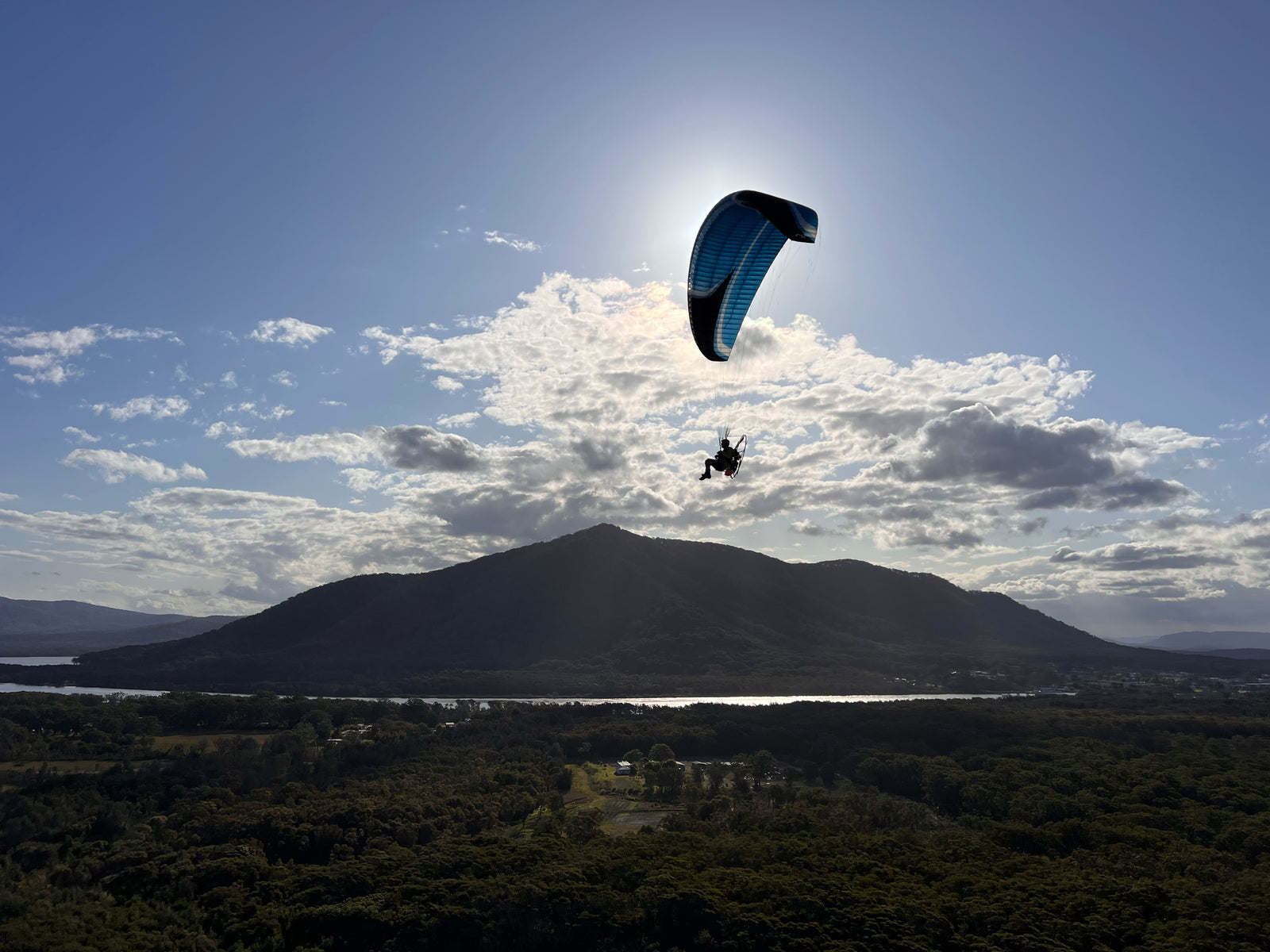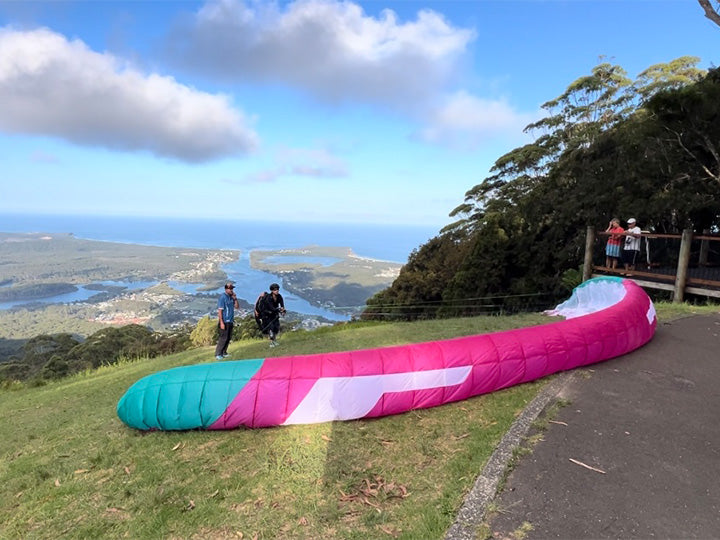Paramotoring: The Best Way to See the World

Paramotoring, often called powered paragliding, is a thrilling adventure sport that allows enthusiasts to soar through the skies with the wind in their hair and the world at their feet. In this comprehensive guide, we will explore the world of paramotoring, emphasising the importance of paramotoring courses, equipment and safety to help you embark on this exciting journey safely and confidently.
What is Paramotoring?
Paramotoring combines two popular aviation activities: paragliding and powered flight. It involves flying a lightweight, motorised paraglider strapped to your back. Adding a small engine and propeller alongside a paramotor wing allows you to take off from flat ground and maintain powered flight.
Why Choose Paramotoring?
Freedom and Accessibility
Paramotoring offers a unique sense of freedom as you can take off and land from virtually anywhere, provided you have enough space. This accessibility sets paramotoring apart from other aviation sports, such as traditional paragliding or hang gliding, which often require specific launch sites.
Scenic Exploration
One of the most compelling reasons to choose paramotoring is the unparalleled opportunity for scenic exploration. With the ability to fly at low altitudes and slow speeds, you can get up close and personal with the world's natural wonders, from lush landscapes to serene lakes and majestic mountain ranges.
Thrill of Flight
For adrenaline junkies, paramotoring offers an exhilarating experience. The combination of flying with the power of a motor and the serenity of gliding through the air creates a unique and thrilling sensation that few other sports can replicate.
Getting Started with Paramotoring
Paramotoring Courses
Importance of Formal Training
Paramotoring may seem straightforward, but it involves a range of skills and knowledge that can only be acquired through proper training. Paramotoring courses are essential for your safety and the safety of others. These courses are conducted by certified instructors who teach you the fundamentals of flying, safety procedures, and equipment maintenance.
Course Curriculum
A typical paramotoring course will cover topics such as:
- Equipment familiarisation
- Ground handling / kiting the wing
- Take-off and landing techniques
- Emergency procedures
- Regulations and airspace awareness
- Flight planning and navigation
- Meteorology and weather interpretation
Hands-On Experience
Paramotoring training goes beyond classroom instruction. It includes practical, hands-on experience that helps you learn to handle the equipment and make in-flight decisions. During training, you'll have the chance to practice take-offs, landings, and manoeuvres under the guidance of your instructor.
Equipment Selection and Maintenance
Your training will also cover essential aspects of paramotoring equipment, including selecting the right gear and learning how to maintain it. Proper maintenance is critical for your safety, as malfunctioning equipment can lead to accidents.
Ongoing Learning
Endorsements and Refreshers
Even after completing a paramotoring course and initial training, learning doesn't stop. Paramotoring endorsements and refresher lessons are valuable for refining your skills, gaining more experience, and increasing your confidence as a pilot. Experienced instructors can provide advanced training tailored to your goals, whether acrobatic flying, long-distance flights, or cross-country adventures.
Safety First
Equipment Inspection
Before every flight, it's crucial to inspect your paramotoring equipment thoroughly. This includes checking the wing, lines, harness, motor, and propeller for any signs of damage or wear. Regular maintenance and inspections can prevent accidents caused by equipment failure.
Weather Considerations
Paramotoring is dependent on weather conditions. Understanding weather patterns, including wind speed, direction, and turbulence, is vital. Flying in adverse weather conditions can be dangerous, so always prioritise safety and postpone flights when unfavourable.
Respect for Regulations
Paramotoring is subject to aviation regulations and airspace restrictions. Complying with these regulations is essential for your safety and the safety of others. Be aware of no-fly zones, altitude limits, and airspace rules in your area.
Choosing the Right Paramotoring Equipment
Paramotor Wing
Paramotoring utilises a specially designed paramotor wing, which consists of a canopy made from durable fabric. This wing is responsible for generating lift and controlling your flight. The wing's shape, size, and design determine your flight performance.
Selecting the right paramotor wing is crucial for your paramotoring experience. Wings come in various sizes and designs, each suited for different purposes. A beginner-friendly wing offers stability and forgiving characteristics, making it ideal for those new to the sport. As you gain experience, you can consider more advanced wings designed for specific flying styles or performance enhancements.
Motor and Harness
Your choice of motor and harness will impact your comfort and flight capabilities. Motors vary in power, weight, and fuel efficiency. A lighter motor can enhance manoeuvreability and reduce fatigue during longer flights. Harnesses should provide proper support and comfort, as you'll wear them for extended periods while flying.
Reserve Parachute
Safety should always be a top priority. A reserve parachute is a critical piece of equipment in case of emergencies. Ensure it is in good condition, properly packed and accessible during flight. Paramotoring courses often include training on reserve parachute deployment.
Accessories
Consider additional accessories such as a helmet, communication systems, and navigation devices to enhance your paramotoring experience and safety. A helmet protects your head in case of unexpected turbulence or accidents, while communication systems allow you to stay in touch with other pilots or ground crew. Navigation devices like GPS can help you plan and track your flights more effectively.
Second-Hand vs. New Equipment
When starting, you may choose to purchase second-hand equipment to reduce costs. However, thoroughly inspecting used gear for wear and damage is essential. New equipment often comes with warranties and reliability assurance, but it can be more expensive. Consult with experienced pilots and instructors to make informed decisions regarding equipment choices.
Conclusion
Paramotoring is undoubtedly one of the best ways to experience the world from a unique perspective. However, it's essential to approach this exhilarating sport with the right mindset and preparation. Paramotoring courses, training, and lessons are the foundation for a safe and enjoyable paramotoring journey. With the right knowledge and skills, you can take to the skies and explore the world's beauty like never before, making unforgettable memories.
Ready to soar to new heights? Join High Adventure for the ultimate paramotoring learning experience and make your dream of flying come true! Don't miss out on this incredible journey – book your paramotoring course today!











